While most U.S. colleges and universities work toward ensuring their advertising materials reflect the diversity of their student body, it wouldn’t be a stretch to say that many would agree with the 91 percent of U.S. marketers who believe “there is still room for growth.” And marketing professionals aren’t alone. A global study of consumers conducted by IPSOS found that 72% of respondents feel most advertising does not reflect the world around them, 63% don’t see themselves represented in most advertising, and 60% believe advertising doesn’t accurately represent their community.
For higher education advertising to truly reflect diversity and the actual student experience marketers must go beyond simply choosing images that seem “diverse.” Rather, the entire institution must commit to efforts that are driven by thoughtfulness, research, and consistency, and leadership must give the marketing department proper time and resources. In the meantime, there is much that can be immediately done to make progress in this area… including these five activities and approaches recommended by diversity officers and equity experts.
1. Take an audit of your current marketing materials
A deep dive into your institution’s marketing materials can uncover weak spots both in your messaging as well as in your design. Catalog your current marketing pieces and then develop a matrix that you and other experts on campus use to evaluate material from the lens of equity, diversity, and inclusion. Reach out to cultural and gender study experts on your campus and ask them to participate in the audit. Ask students for their opinions. Broader campus participation in the evaluation of marketing can help uncover stereotypes never before noticed.
While an audit is an important step toward cataloging and improving your marketing materials, it is imperative that future materials contain diversity of thought and ideas from the get-go. Commit to not only reaching out across campus to obtain diverse voices, but also to hiring and promoting diverse staff and then empowering them make decisions.
“The ability to decide what is and what is not ‘diverse’ is a certain form of privilege,” says Jonathan Henderson, regional coordinator for the Umoja Community Education Foundation. “Who is ‘at the table’ when decisions are being made is just as important as who is actually making the final decision.”
2. Invest time in knowing your audience
Budget and time restraints often mean that research takes a back seat. Even the most organized, forward-thinking marketers find themselves up against deadlines that result in the use of untested messages. Keep in mind, however, that failing to conduct research can result in messaging that not only falls flat, but which also doesn’t adequately represent your student body.
A yearly survey of students can help you decide on messages and tactics that are unique to various audiences as well as those that could work across all audience segments. Small, quick focus groups can help you better understand characteristics that are not easily tracked while also uncovering messages that resonate. And, once you have data on each of your key audiences, consider creating personas.
“Develop or update your audience personas to ensure that they reflect the diverse characteristics that are important to your audience and/or your business,” writes Anne Gynn in a 2020 article for Content Marketing Institute. “Most importantly, ensure that you don’t operate from a single, homogeneous persona.”
These personas should also contain the types of publications or digital tactics that best reach each audience. “It’s important to know where your audience actually hangs out,” notes Henderson. “I have seen higher education marketing that has inclusive images, great videos, etc., but ads are running in publications that don’t attract a diverse audience.” The placement and reach of your marketing should complement your messaging and design, and both should be informed by research.
3. Go beyond the image
It’s simple: feature real students, not models. You need only look to Unilever’s Dove Real Beauty Pledge, launched in 2004, to understand the power of inclusion. While Dove has made major mistakes in its advertising, including a 2017 ad that sparked national outrage, the company’s Real Beauty Campaign has lasted more than 15 years and has come to represent an appreciation of women of all ages, races, and sizes.
Besides using real people and real stories, think about other ways to integrate culture into your campus community. For example, if you are a Hispanic Serving Institution (HSI), display Hispanic artwork on your college, host cultural events, and invite key Hispanic speakers to campus. If being an HSI institution is something touted in your college marketing, these efforts can be showcased so that potential students can see the college is dedicated to celebrating diversity and strives for cultural understanding and appreciation of groups represented in advertising.
4. Set standards for inclusive language
On it’s Inclusive Language website, Seattle University defines inclusive language as language that is free from words, phrases, or tones that reflect prejudiced, stereotyped, or discriminatory views of particular people or groups. It is also language that doesn’t deliberately or inadvertently exclude people from being seen as part of a group.
Most college marketing departments have done an amazing job developing brand style guides that contain guidelines for using the college logo, colors, and other brand assets. They can now take these guides a step further by including inclusive language guidelines. The Inclusive Language principles set out by Handshake is a great starting point and has a list of phrases to avoid and principles to remember.
5. Showcase your commitment to diversity and inclusion on your website
The college website is by far your most powerful marketing tool. “Websites are the most important digital tool colleges have to reach potential students,” says Kenneth Hartman, the former president of Drexel University Online, in an Inside Higher Education article that builds the case for colleges to strengthen their online presence.
Not only are today’s students searching out information about your class schedule, tuition, and student services, but they are also looking to see if your college shares their same values. Ensure your website has a section dedicated to diversity and inclusion. This section should be easy to find—ideally with a link placed in the college header or footer so that it shows on every page.
Nereida Perez, currently the Global Head of Diversity and Inclusion for McCormick & Company, recommends the site be developed in conjunction with your organization’s communications office, and contain:
- A president’s message
- A message from the head of Diversity and Inclusion or similar campus organization
- Sections for employee groups
- A list of diversity resources
- A list of training opportunities
In addition, the site should contain information specific to students, both current and future.
“Additionally, I think it’s important for colleges to tell the truth about where they are,” says Henderson, who shares a story of a university who posted a video of a student complementing the college on its inclusivity efforts just two weeks after wide-spread student protests surrounding diversity issues. “A lot of colleges selectively post statistics or make statements that communities of color already know are not accurate. Colleges should only make statements that they can actually back-up.”
Ensuring diversity and inclusion are adequately reflected in your marketing materials should not be a one-time exercise. It is a commitment that must be made by the marketing and communications office and backed by college administration. In a perfect world, it would also be accompanied by a budget that could support research and testing. But big dollars aren’t required to make a big difference. Progress can be made one step at a time with deliberate strategies that grow stronger with practice and time.
How Serving Students with Dignity and Respect Can Improve Equity
Authentically Communicating Diversity on Campus Through the Written Word










